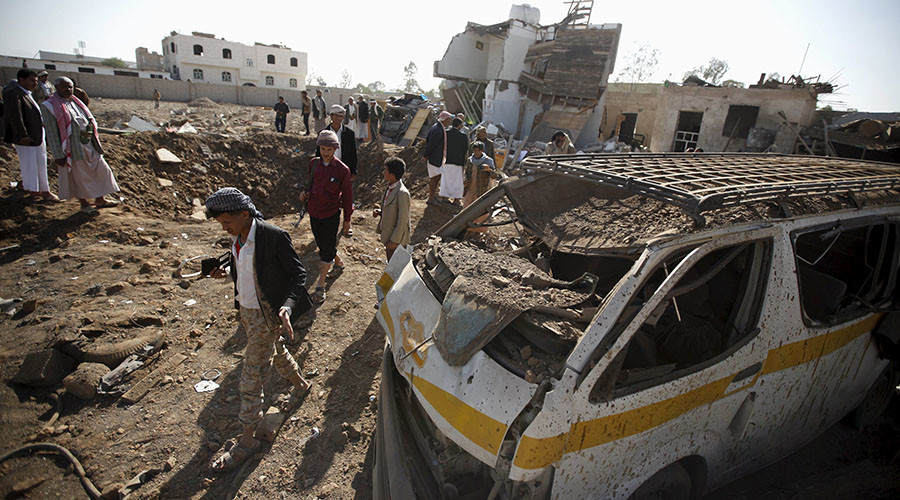PHOTO: Aftermath of a Saudi airstrike on Yemen’s capital Sana’a on Wednesday (Khaled Abdullah/Reuters)
Human Rights Watch has said that the Saudi-led coalition is using cluster bombs in its aerial intervention in Yemen’s civil war.
HRW said the cluster munitions were dropped on Yemen’s capital Sana’a, controlled by the Ansar Allah (Houthi) movement, on Wednesday. While saying that it was unclear if civilians had been killed or wounded, the organization asserted that “the deliberate or reckless use of cluster munitions in populated areas amounts to a war crime”.
Residents of two Sana’a neighborhoods described the attacks between 5:30 and 6 a.m. on Wednesday. Houses, a school, and vehicles were covered in pockmarks characteristic of the damage from cluster bombs. The nearest military installations were 600 to 800 meters away.
Human Rights Watch said photographs “showed unmistakable remnants of cluster munitions, including unexploded sub-munitions, spherical fragmentation liners from sub-munitions that broke apart on impact, and parts of the bomb that carried the payload”. It identified the weapons as US-made BLU-63 anti-personnel/anti-materiel sub-munitions and components of a CBU-58 cluster bomb.
Each air-dropped CBU-58 cluster bomb contains 650 submunitions. The US transferred 1,000 of the bombs to Saudi Arabia sometime between 1970 and 1995.
HRW has documented the use by coalition forces of three types of cluster munitions in Yemen, while Amnesty International documented a fourth type.
Saudi Arabia and allies launched the aerial intervention in March 2015, trying to halt the advance of the Ansar Allah movement that had forced the Government to leave Sana’a for the port city of Aden to the south.
Earlier this week, the UN almost 2,800 civilians have been killed in Yemen since March, with another 5,300 injured.

